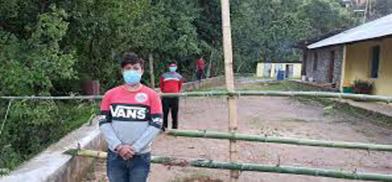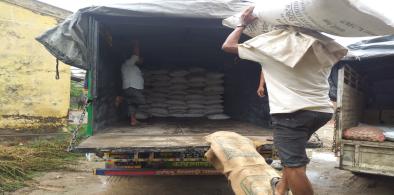Quarantine guidelines impossible to meet: local governments
Nepal’s central government has laid out guidelines for COVID-19 quarantine centres across the country, but some local authorities say it may be better to let people self-isolate at home rather than run crowded facilities that may themselves spread the disease

Kathmandu: Nepal’s central government has laid out guidelines for COVID-19 quarantine centres across the country, but some local authorities say it may be better to let people self-isolate at home rather than run crowded facilities that may themselves spread the disease.
Municipalities and provincial governments say there just is not enough money, medical supplies and equipment and health personnel to follows the guidelines for coronavirus centres.
“This municipality is not in a position to make the quarantine facilities according to the WHO standards. The central or state government should have made them,” asserts Bhaktapur Mayor Sunil Prajapati. “So, we have instead asked high risk groups to just quarantine themselves at home.”
The central government in Kathmandu has sent out pamphlets ‘Criteria for Operating and Managing Coronavirus (COVID-19)’ with instructions such as maintaining 1m physical distance between beds, provision of mosquito nets, availability of a doctor, nurse, and a paramedic for every 100 people, PCR tests, and health checkups for everyone twice daily.
Prajapati says that although home self-isolation is less risky than an inadequate quarantine, there is danger sending suspected cases home without PCR tests. The municipality is therefore negotiating with the city’s hotels to turn them into quarantine centres. Hotels in the district that also includes Nagarkot have been empty ever since the lockdown started 10 weeks ago.
A classroom turned into a qurantine centre in Kapilvastu. Photo: Anil Kumar Ojha
In Lalitpur, Mahalaxmi Municipality is preparing safe accommodations for up to 12 people in every ward that try to meet as many of the WHO guidelines as possible such as physical distancing, adequate water and sanitation, health care, and even an ambulance service.
“We are trying our best to meet all the criteria, but it is difficult. So, instead of crowding everyone in one centre, we have decided to spread them out in safe housing,” says Mahalaxmi Mayor Rameshwar Shrestha.
Public health experts say if this is the condition in Kathmandu Valley, it will be many times more difficult for local governments in under-served regions of western and far-western Nepal which are being overwhelmed by returnees from India. Both mayors Prajapati and Shrestha agree that quarantine centres should be the responsibility of the state.
Out of the Rs6.8 billion set aside for emergency COVID-19 response, 34% has been allocated for quarantine management, according to a response plan by the Ministry of Health and Population. However, even if it is spent properly it is not enough to take care of the 168,000 people across the country already in quarantine facilities, mostly along the southern border, and in the western mountains.
In Nepalganj, there are 400 people already in quarantine at a local college campus, and the municipality has used additional budget to upgrade facilities and tried to meet as many of the guidelines as possible, even adding items not in the list like having a counsellor and a conducting yoga tutorials.
“This is an emergency situation, we may not be able to provide the same comforts as at home, but we are trying our best,” says Nepalganj deputy mayor Uma Thapa. “But as more people pour across the border we may soon run out of space. So, we are trying in discussion to see if we can send some for home isolation.”
The government also has guidelines for home quarantine which include one person per room, separate bathroom, frequent hand washing, measuring body temperature twice a day, etc.
Nepalganj has made it mandatory for everyone returning from India to stay in quarantine, and returnees have the option to pay to stay in a hotel.
Nepalganj is near the hotspot of Naraianpur Village Municipality which saw a case of community spread after the first infections from people returning from India. Mayor Istaq Ahmed Shah says all those recently returned from India and people they have been in contact with have been quarantined in village schools, but he admits facilities there are inadequate.
“If a city is unable to fulfill the criteria for quarantining facilities, how do they expect a rural municipality to do so? We are trying to make do the best we can,” adds Shah, who says he has used funds from the development budget to run the centre. But there is still a shortage of 300 beds and mattresses for new arrivals at the cetnre.
There is no doctor even in the only Primary Health Care Center in Narainpur, so there is no question of having a doctor in the quarantine centre. But there are 12 health workers, including one assistant health worker, one nurse, and volunteers.
In the adjoining district of Kailali, Mayor of Godavari Municpality Hari Singh Saud says his 28 quarantine sites already have 2,000 people and they are full up, but there are still 200 people coming in every day.
“To fulfill these criteria set by the government, we will need a bigger budget. The government is just giving instructions, not sending any money, how can this municipality handle this?” asks Saud, who says the city needs minimum facilities for 10,000 people.
Mayor Narula Chaudhary of Ghorahi municpality in Dang has 56 quarantine sites for returnees from India where there were already 1,400 people, eight of whom have so far tested positive for the virus. Chaudhary expects more people arriving as India relaxed its lockdown
In Gadimai Muncipality of Rautahat in the eastern Tarai, the quarantine centres are full with 290 people, and Mayor Shyam Prasad Yadav says he is fed up of people demanding the same facilties as at home. He says: “We have tried to make it as comfortable as possible with the available resources, but they make unnecessary and unrealistic demands, such as mineral water, fish, meat.”
In eastern Tarai distrcit of Jhapa, ward chair Nabin Baral of Mechinagar Muncipality has it slightly better with only 107 people in 20 quarantine centres. He says: “Of course they do not meet international standards. But under the circumstances they are the best we can do.”
https://www.nepalitimes.com/latest/quarantine-guidelines-impossible-to-meet-local-governments/

















Post a Comment